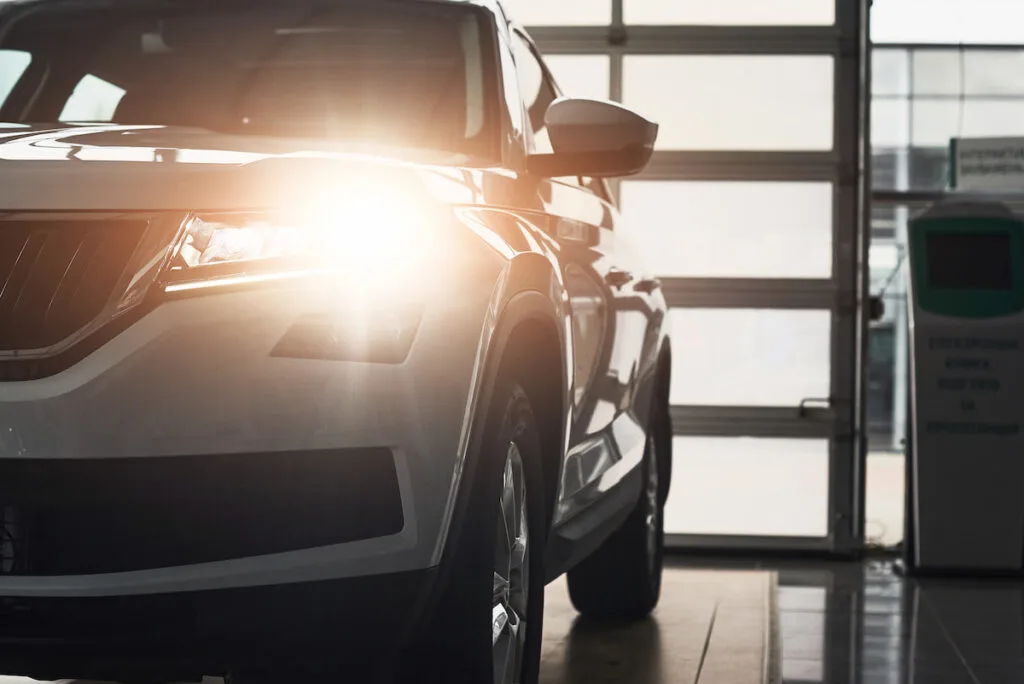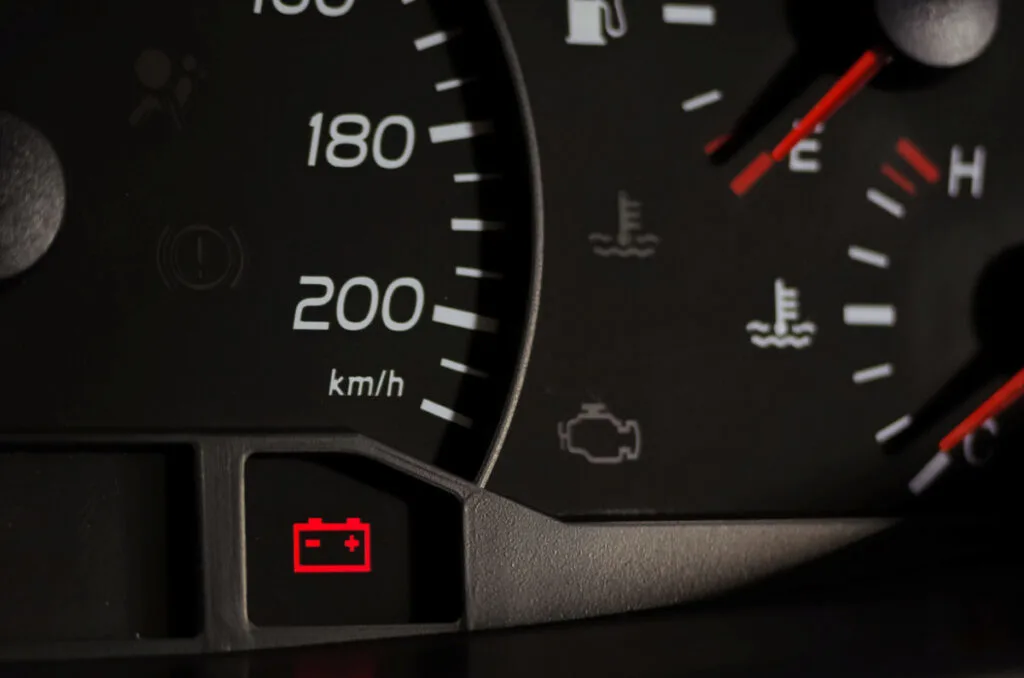*This post may have affiliate links, which means I may receive commissions if you choose to purchase through links I provide (at no extra cost to you). As an Amazon Associate, I earn from qualifying purchases. Please read my disclaimer for additional details.
The alternator is a simple but essential component of any vehicle. It transforms the rotating crank shaft’s mechanical energy into electrical energy by induction. The generated current, in turn, powers the electrical accessories of your car.
The alternator also keeps your battery charged, ensuring you have enough power to start your vehicle.
As you can infer from the submission above, if your alternator becomes faulty, other components of your car will be affected. Ultimately, the vehicle may even stop starting. So, you want to spot a bad alternator early.
Thankfully, we discuss 9 symptoms that can help you tell if your alternator is bad in the rest of this article.
Table of Contents
Dim or Extremely Bright Lights
The alternator supplies the electricity needed by your vehicle. So, when it becomes faulty, the voltage supplied to the car’s electric accessories becomes inconsistent.

In line with this, one of the early symptoms of a failing or bad alternator is dim or extremely bright dash lights and headlights.
Whether dim or bright lights, the symptoms you will experience depend on several factors. The first factor is the alternator’s stage in its death cycle and how well it produces power.
The next determining factor is your car’s programming. Manufacturers of most new model vehicles have developed a preprogrammed priority list for electricity transfer if an alternator problem arises. The basis for this decision is safety considerations.
For instance, in such vehicles, your radio or heated seat will go off before your headlights become dim. This arrangement allows you to pull over and park safely if your car dies. At this point, your heated seats or radio become secondary.
Flickering Lights
Another symptom of a bad alternator is flickering lights. This particular symptom often appears simultaneously with dim lights. If you notice your lights become dull, then bright, then dull again, your electrical system is malfunctioning, and the culprit could be the alternator.
When your headlights are flickering, the alternator cannot generate the power required to keep your headlights on at full strength. Instead of dimming the lights, your car will keep trying to maintain the required lighting output. But it will keep failing, and this will make the lights flicker.
Dead Battery
Sometimes when a battery dies, it has simply reached the end of its life after several years of service. However, a dead battery may be a symptom of a bad alternator.
When the alternator is bad, your battery will not receive sufficient charge while the car engine is running. Consequently, the battery’s charge will deplete faster, and the battery will die.
To determine if the issue with your car is a dead battery or a bad alternator, simply give your car a jump-start.
If you notice your car stays running after the jump-start, you may need to replace your battery. But if the car dies after the jump-start, it means you have a bad alternator.
Slow or Malfunctioning Car Accessories
When your car’s accessories don’t get enough power to function, they will become slow or begin to malfunction.
So, the alternator could be the culprit if your speedometers keep going haywire or your windows take too long to roll up or down. Other components of your car that could be affected include radio, heated seats, power locks, and windshield wipers.
Difficulty Starting Your Car or Frequent Stalling
Although there are other reasons your car may stall or refuse to start, do not rule out the alternator. Difficulty starting your car or regular stalling can sometimes be one of the first symptoms of a bad alternator.
A bad alternator will make starting your car difficult because your car starts with the power stored in the battery. But as we already mentioned, when the alternator fails to charge the battery, the battery will not have enough juice to run the car smoothly.
On the other hand, if your car keeps stalling while you drive, it means your spark plugs are not getting the power they need from the alternator to keep your engine working.

Weird Noises
While some car sounds are harmless, others can indicate a serious mechanical issue. If you hear any strange noise coming from under your hood, it could be a symptom of alternator problems.
The alternator is driven by a serpentine belt or an accessory belt together with the crankshaft pulley. Once this belt rubs against the side of the pulley or is misaligned, you may start hearing strange noises. These sounds may also be triggered by failed engine bearings.
Engine damage is also a possibility and one of the worst-case scenarios of a bad alternator. Keeping a car going with a bad alternator is difficult. This is why you need to get it fixed by a professional before your engine is damaged.
The Smell of Burning Wires or Rubber
Another symptom of a bad alternator is the smell of burning wire or rubber. When you smell this, your alternator may be on the verge of overheating.
When your alternator has damaged wires or is overworked, it will emit an odor similar to an electrical fire.
An overworked alternator will transfer too much power through the wires, causing them to burn. Damaged wires will resist or restrict the flow of electricity, causing them to emit a foul smell.
Since the alternator drive belt is under constant friction and tension, it may start wearing out and emitting a foul burning rubber smell. When a pulley is misaligned or not turning freely, the belt experiences more friction. This causes it to heat up and emit a burning rubber smell.
Note that not every bad smell indicates alternator problems. The odor from a faulty alternator differs from the smell of overheating brakes or burning oil.
In some instances, you may not smell anything, yet your alternator could be failing.
Battery Warning Light on Dashboard
When the battery warning lights on the dashboard pop up, many car owners mistake it for a battery-related issue. The battery warning light is also a sign that your car’s electrical system is malfunctioning.
Alternators are built to work within a specific voltage range, usually around 13-14.5 volts. When your alternator is bad, the voltage will drop, and you will see the battery warning light on your dashboard. This warning light will also appear if the alternator exceeds the voltage limit.

Broken or Loose Connections
Another symptom of a bad alternator is when the alternator produces electricity that goes nowhere.
When the alternator produces electricity, it passes through large cables and smaller wires. However, if there is an issue within the connections, wires/cables, electricity may not pass through.
In a bid to subdue the resistance in the faulty connection or cable and solve the issue, the alternator will increase power output. But this will cause the car lights to become brighter.
Another consequence of this issue is the smell of hot wires; the elevated resistance in the cables will make them heat up. Of course, when they become hot enough, they will produce an unpleasant smell.
There could also be a problem with the alternator’s diode rectifier. Alternators produce alternating current (AC), while the accessories of your car work with direct current (DC). The job of the alternator’s diode rectifier is to convert alternating current to direct current.
When the alternator’s diode rectifier begins to malfunction, your car cannot use the electricity the alternator produces.
Resources:
- https://www.motorverso.com/how-to-check-if-alternator-is-bad/
- https://www.lesschwab.com/article/starting-problems-how-to-tell-if-its-the-battery-or-alternator.html
- https://shop.advanceautoparts.com/r/advice/car-maintenance/6-symptoms-of-a-bad-alternator
- https://www.carparts.com/blog/how-to-diagnose-a-faulty-alternator/
- https://www.goldeagle.com/tips-tools/5-signs-of-a-bad-alternator/
- https://www.firestonecompleteautocare.com/blog/maintenance/signs-of-a-bad-alternator/
- https://auto.howstuffworks.com/under-the-hood/diagnosing-car-problems/mechanical/5-signs-alternator-problems.htm
